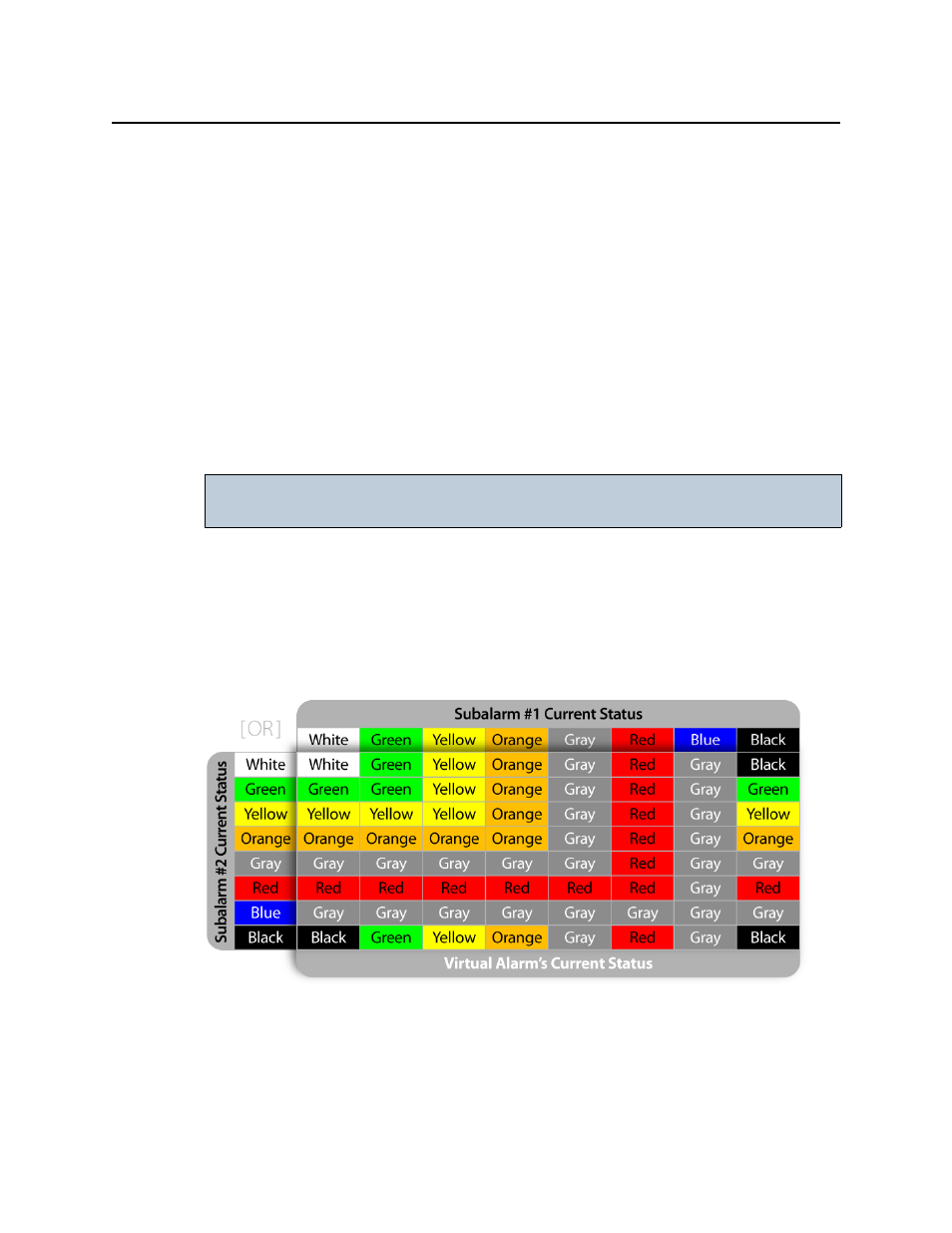Overall alarms, Alarm logic tables – Grass Valley iControl V.4.43 User Manual
Page 362

Alarms in iControl
Overall Alarms
352
Any alarms in iControl — including other virtual alarms — can be combined together to form
a new, higher-level virtual alarm. You cannot, however, create a virtual alarm that includes
itself as a sub-alarm, since this creates a cyclical dependency. iControl automatically checks for
this dependency, and will alert you of any potential problems.
Since a virtual alarm can be composed of virtual alarms other than itself, there can be many
levels of virtual alarms within a particular virtual alarm. At this time there is no limit to the
number of levels that a virtual alarm can have.
Overall Alarms
The alarms that are visible in the iC Navigator window correspond to a special kind of virtual
alarm, called an Overall alarm, that are published by devices and services to the GSM. If you
right-click on a device in the iC Navigator window and choose Configure overall alarm, a
small window appears identifying the URI of this virtual alarm. Click the Browse button, and
the GSM Alarm Browser opens, with the Overall alarm highlighted. From here, you can access
the Overall alarm properties as you would for any other alarm.
Alarm Logic Tables
The status of a virtual alarm is determined by comparing the values of its sub-alarms. The
outcome of such comparisons is defined in alarm logic tables built into iControl. Outcomes can
be defined pessimistically (choose the more severe of two statuses), or optimistically (choose
the less severe of two statuses). The pessimistic determination of a status is sometimes
referred to as an OR operation. The optimistic determination of a status is sometimes referred
to as an AND operation.
Figure 7-10: Pessimistic OR logic table for determining the status of the CURRENT or LATCHED component of
a virtual alarm
IMPORTANT: Overall and GSM contribution alarms are disabled by default for all Densité
services. Make sure all alarms and levels are configured as required.
